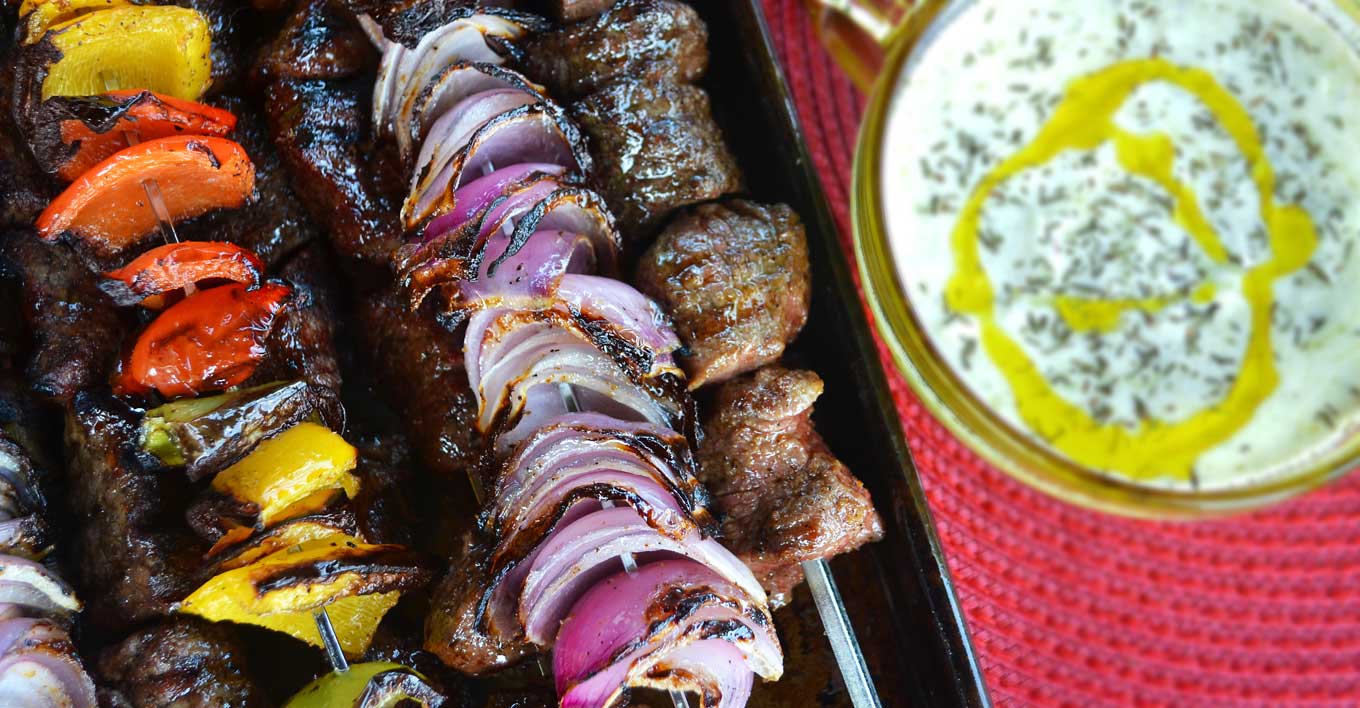
Unfortunately for cute, furry creatures everywhere, I like to indulge in a nice juicy steak, chop or burger from time to time. I don’t discriminate either. Beef, pork, venison, bison, goat or lamb will all do just fine, thank you very much.
I do like to keep my meat eating in perspective, however, and not abuse this privilege by overindulging. Yes, I view eating beings once alive and free of opposable thumbs as a great privilege, which is why I love the idea – so prevalent in the Mediterranean diet – of making meat either an occasional treat or a mere accessory to a filling and scrumptious meal. With seven billion of us sharing this planet, it seems like the most sensible way to proceed.
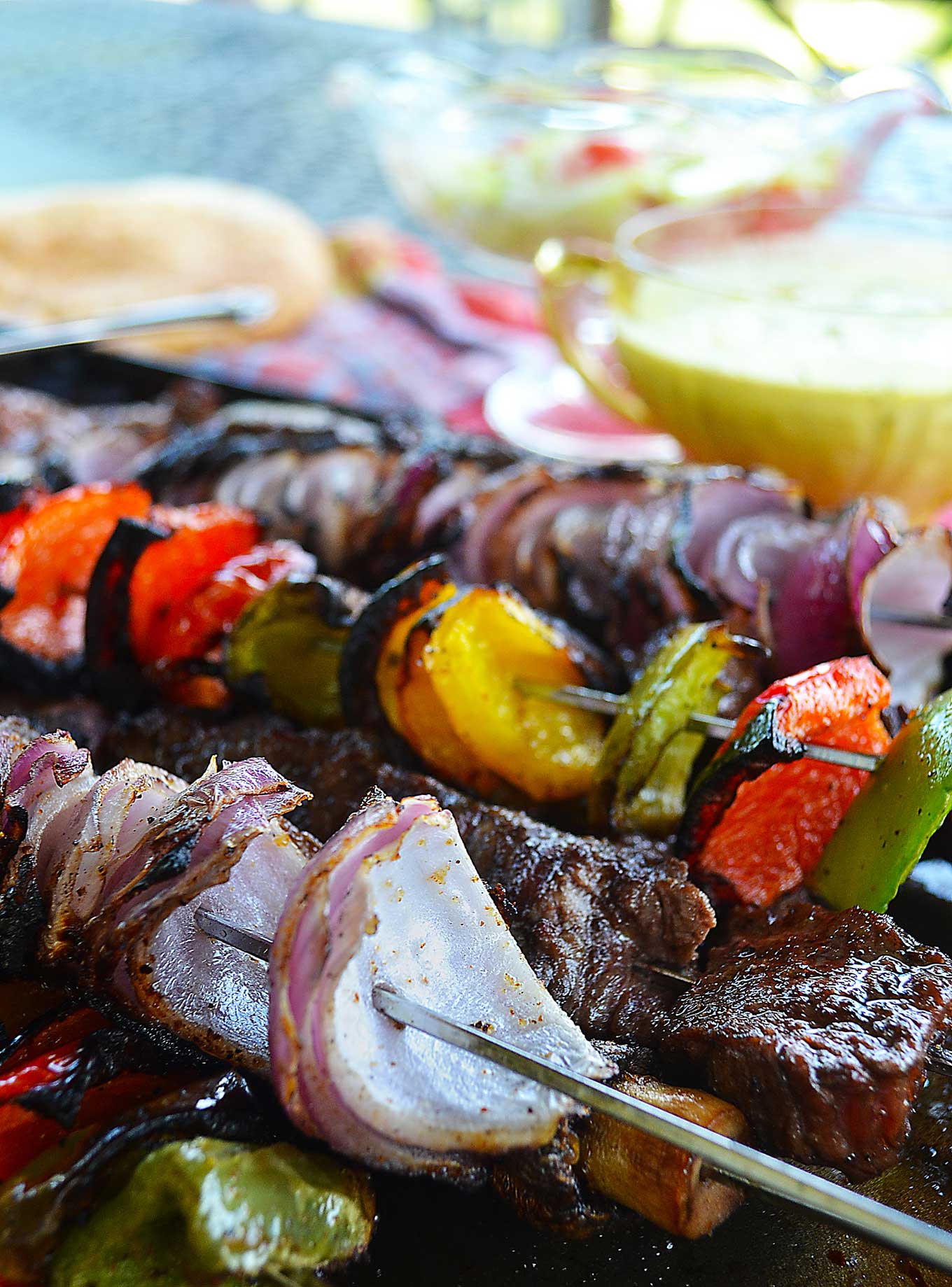
This approach also leaves around $54 in my pocket instead of shelled out on four beautiful t-bone steaks that feed four people…once.
Still, a girl loves to live a little. A girl loves to partake in a little bit of that savory and satisfying chewiness only meat provides. Occasionally.
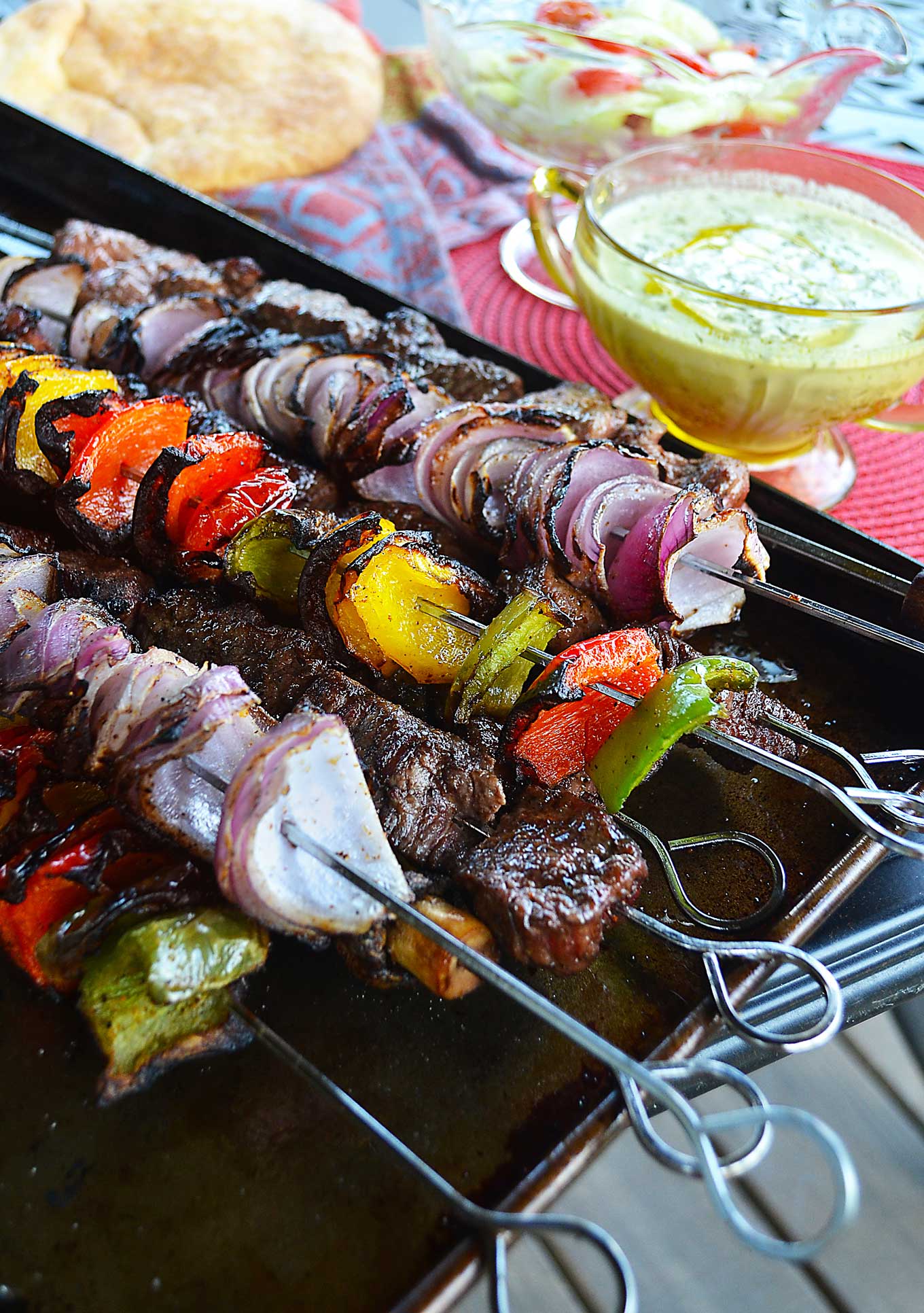
Which brings us to the kebab, or the shish kebab, to be exact. I say this because a good number of other types of kebabs exist out there donning exotic names like chelow, kakori, tunde ke, boti and hara bhara.
But the shish kebab, with which more Americans are most familiar, is considered to be the oldest among its kind. With origins in the Middle East, it literally means ‘gobbets of meat roasted on a spit or skewers’ in Turkish. It is said they came about when valiant medieval Persian soldiers used their swords to grill meat over open field fires, which adds just a dash of romance to its historical lore, as does a mention in the Bible and in Homer’s Odyssey.
Essentially a meal on a stick, shish kebabs consist of small amounts of meat speared, along with a myriad of vegetables, onto skewers and then grilled. I am particularly drawn to them because they create a satisfying meat-hued meal without breaking the piggy bank, or the planet.
I honestly don’t know, given their simplicity, why I haven’t included them in my family dinner rotation menu before now. Or why, considering they can be prepared ahead of time, I haven’t turned them into one of my regular offerings when friends and family come over.
It is not an oversight I plan on repeating.
In fact, I’ve been ‘shish kebab-ing’ quite a bit lately and have learned two rather helpful things.
First, I forgo inexpensive top sirloin and pricey tenderloin for another kebab-ideal cut of meat called petite tender medallions. Otherwise known as beef shoulder, it is tender enough – thus the name – to skip needing to tenderize it with a marinade and costs the same as top sirloin. Now, you may not always find the petite tender medallions already packaged in the meat section, but that’s nothing a fast phone call to your supermarket butcher can’t fix. That way, the meat can be there waiting for you, conveniently cut into 1 inch chunks and to your weight specification…and at no extra charge.
Second, I now skewer my meats and vegetables separately. In doing so, I honor their individualized cooking times and avoid the inconvenience of having to eat burnt pieces of meat and undercooked peppers and onions. It was a difficult transition to make, mind you, because I do so love the sight of little nuggets of caramelized meat surrounded by the bright, inviting colors of neighboring vegetables.
But I am also a pragmatist and love my food cooked just so…cute, furry creatures or not.
And because summer’s not yet over, these kebabs make perfect warm weather, low-maintenance fare for when you need to feed people but don’t feel like fussing. Use whatever vegetables make you happy…except for maybe cherry tomatoes, which I find get rather squishy when cooked longer than a couple of minutes. My usual suspect list always includes a red pepper for color and an onion for the caramelized sweetness it lends to the dish.
Hmmmm….I think I’m purring….
making tender petite medallion shish kebabs
Purchase 1 ½ lbs. of petite tender medallions (beef shoulder) that has been cut in 1-inch cubes. Remove any remaining white membranes from each piece of meat, as they will create a ‘rubber band-y’ texture if cooked.
Fire up your grill and prep it for high, direct heat. While you wait for the fire to reach its peak heat, prep 1 red bell pepper and 1 green bell pepper by cutting them in half, removing the hard stem top, and then quartering them.
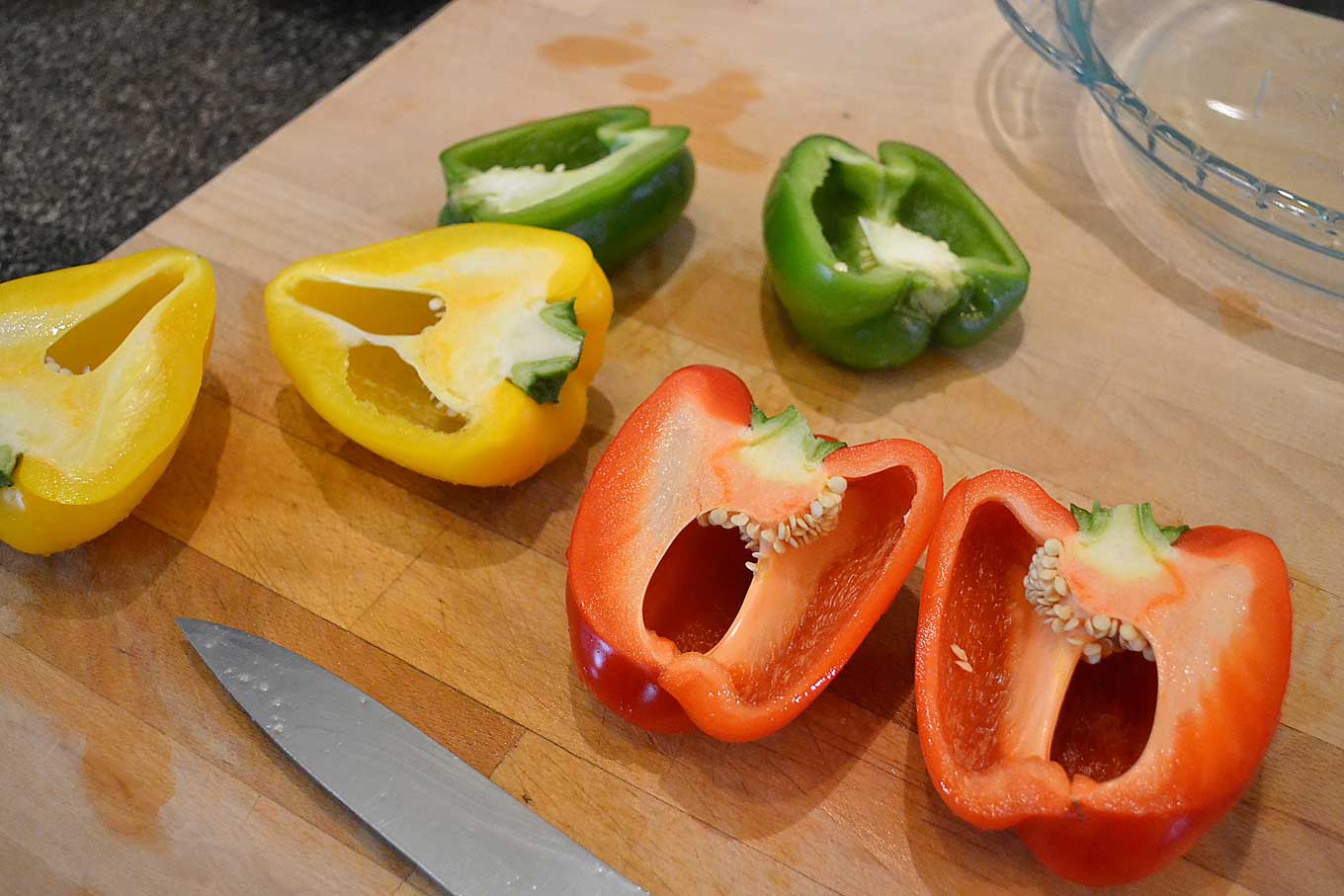
Remove any white membranes from their inside as it is bitter and then cut into roughly 1-inch pieces.
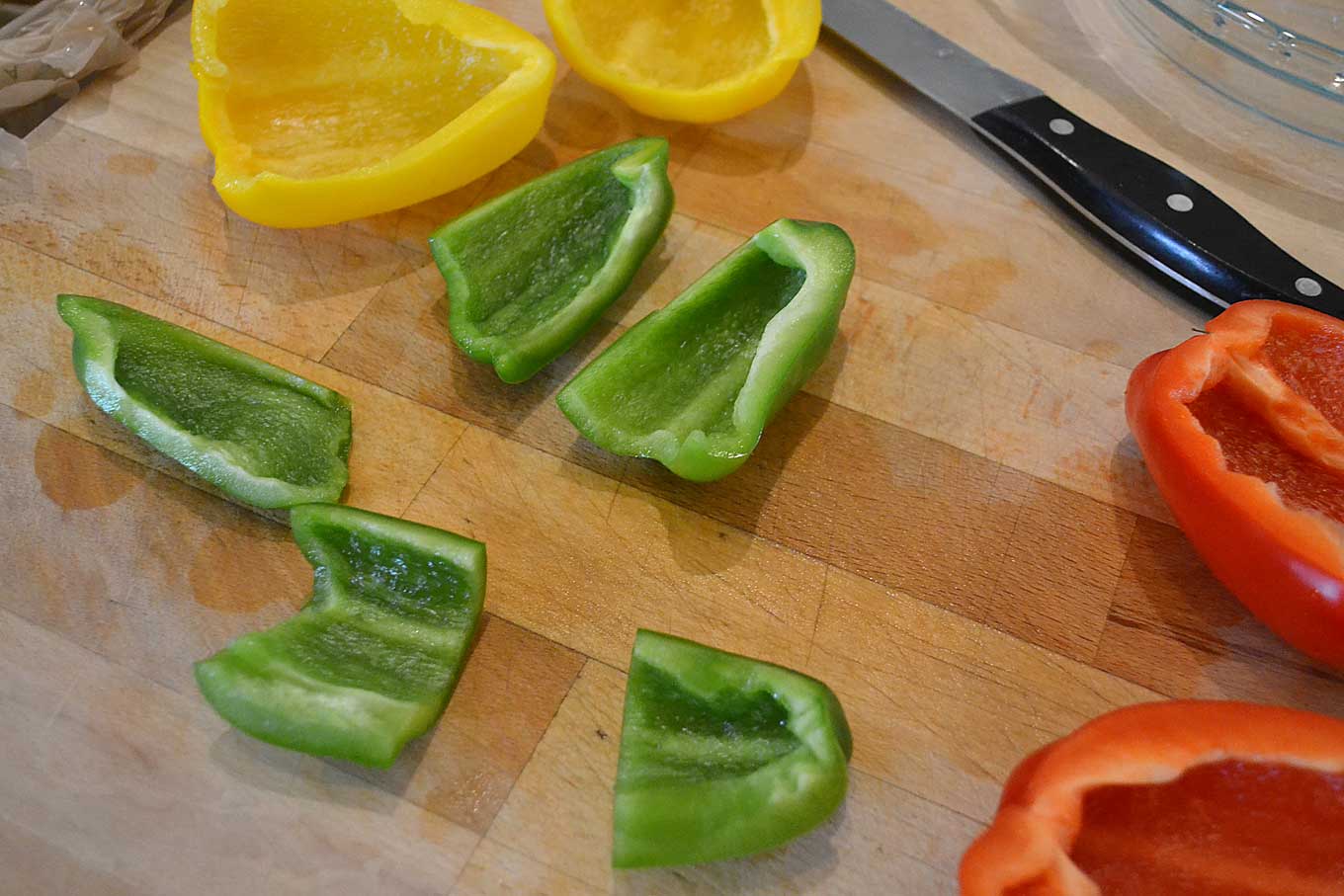
Slice 1 medium red onion in half horizontally and then, with each half laying cut side down, slice each half into 6 pieces, which will resemble a wheel with spokes.
I usually try to buy a rather flat onion to avoid having to slice the onion in half because I think it just looks nicer.
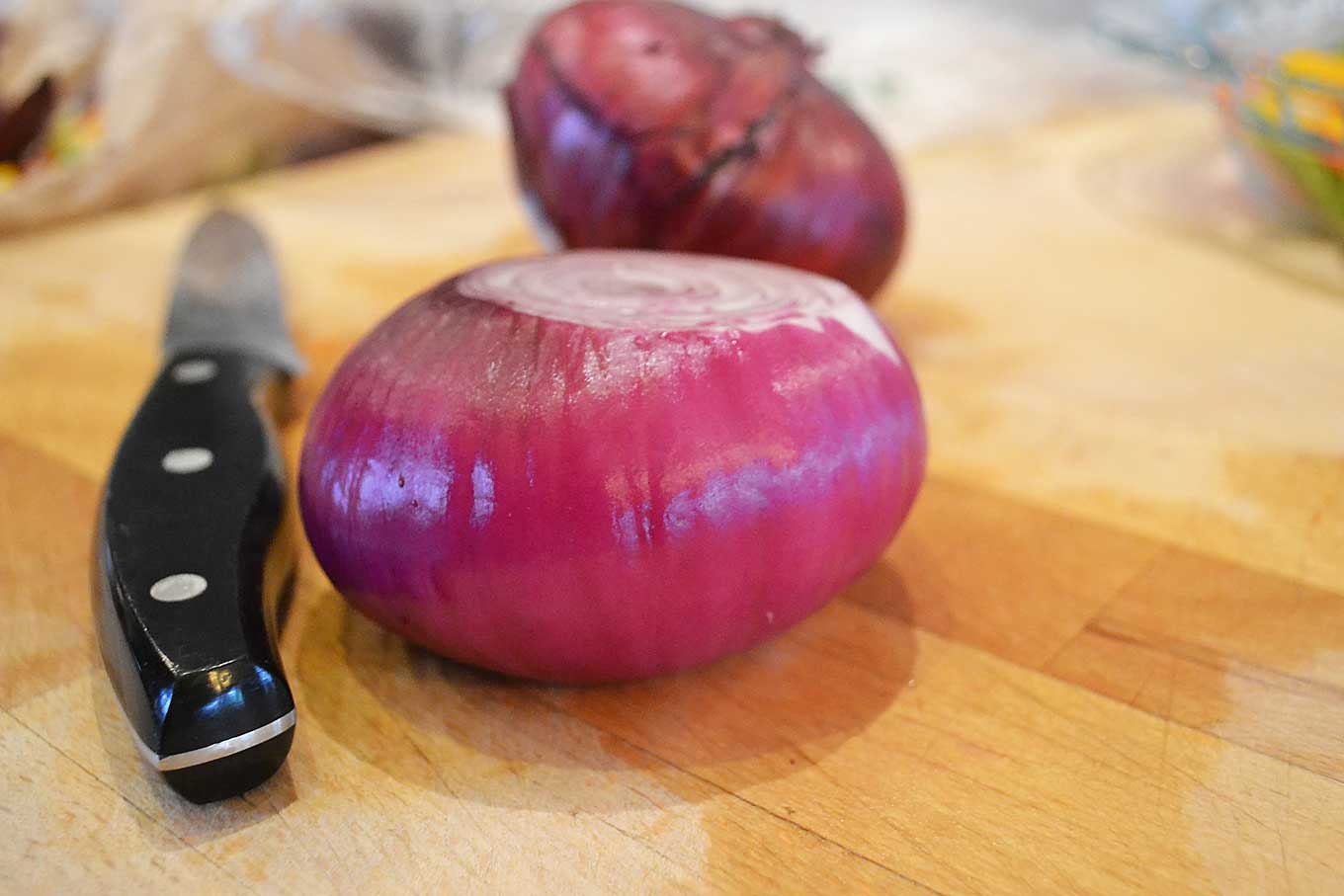
But it all depends on what’s available at the market since I don’t have my own thriving vegetable garden out back.
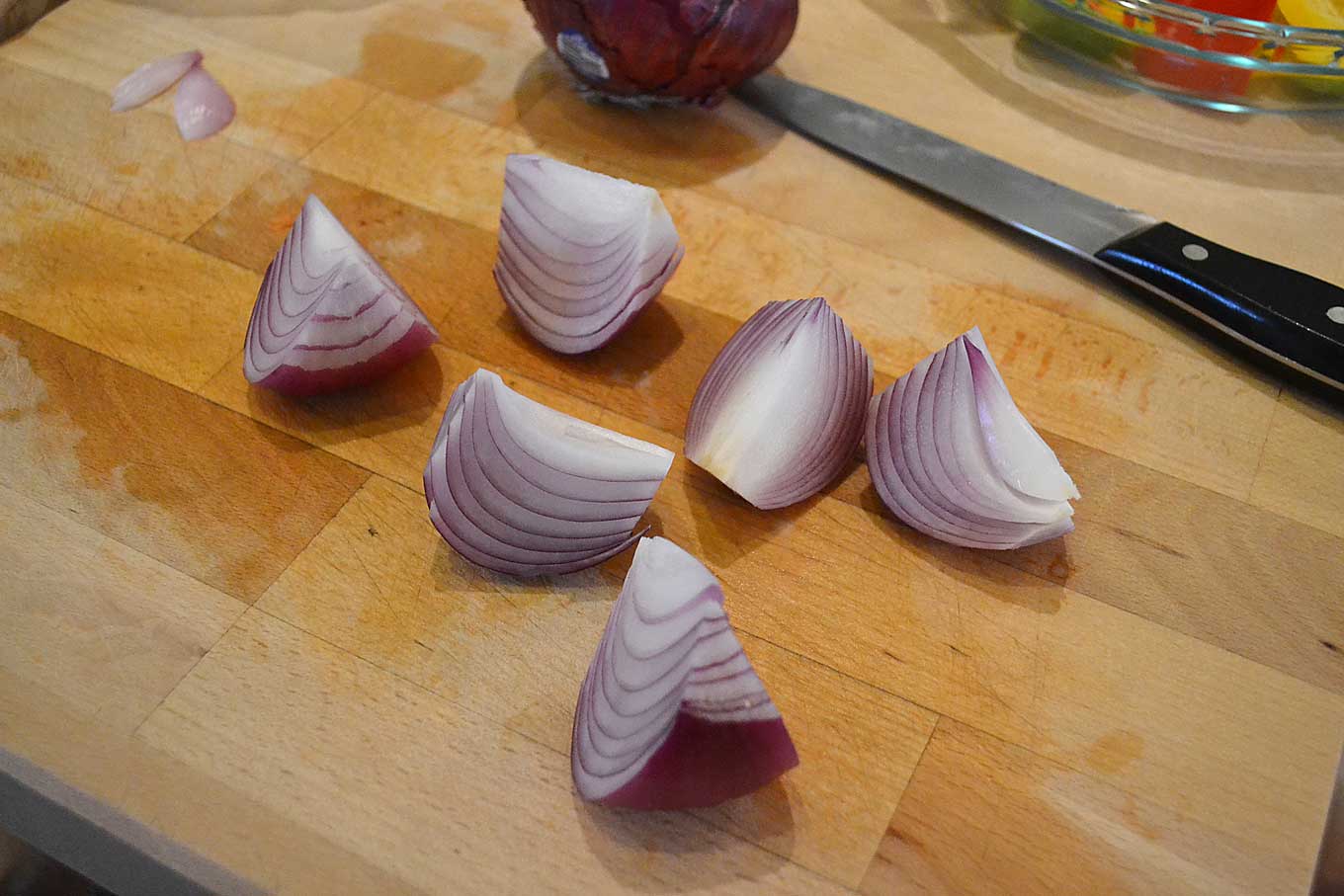
Quickly wash 24 white or cremini mushrooms, leaving them intact.
Pour ½ cup of olive oil and 1 ½ tablespoon of Chef Paul Prudhomme’s Meat Magic spice blend (available in the spice section of well-stocked supermarkets) into a shallow container (I use a Pyrex pie dish). Mix well to ensure even distribution of the spice.
Add the onion pieces and mix well to ensure each piece is covered with the condiment. Carefully thread onto a stainless steel skewer (bamboo skewers will do, though they can’t sustain as much weight). Make sure to leave a little space between each piece to allow for more even cooking. Place them on a large, shallow plate or tray.
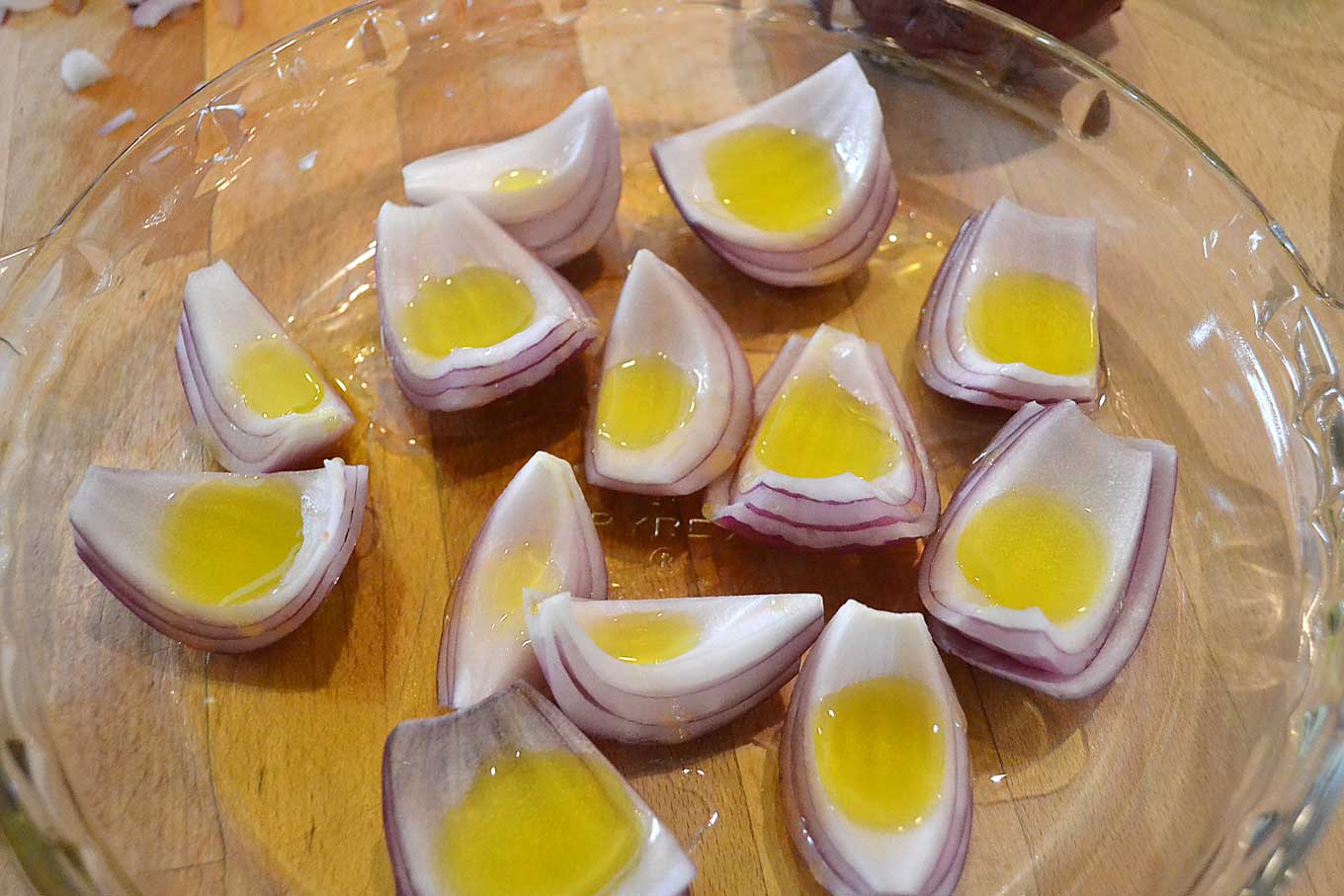
Repeat this process, in the same shallow bowl, with the green peppers, onion pieces and mushrooms.
Adding a little more oil and spice, if necessary, and repeat the process one final time with the pieces of meat.
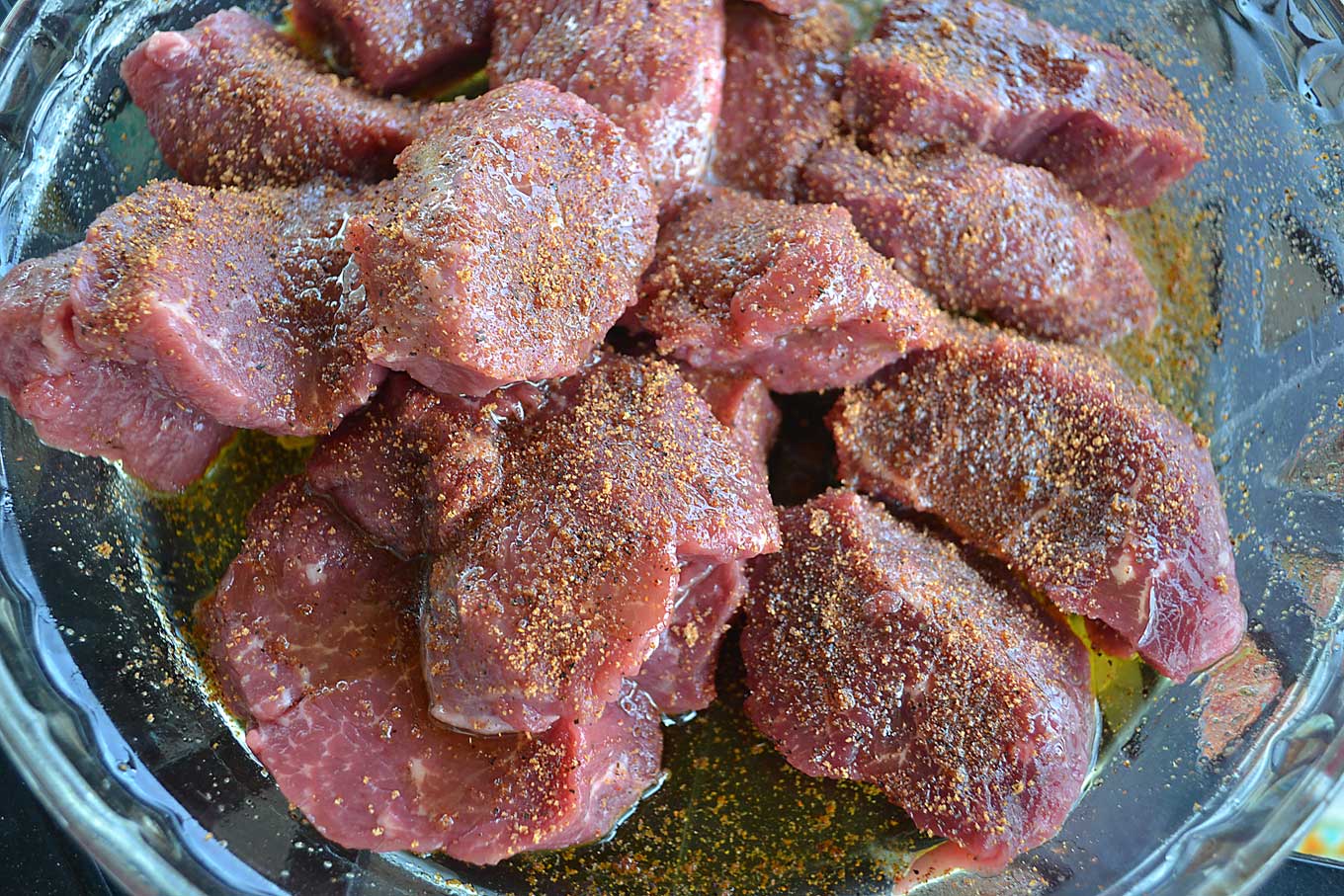
Mix well to ensure even coverage.
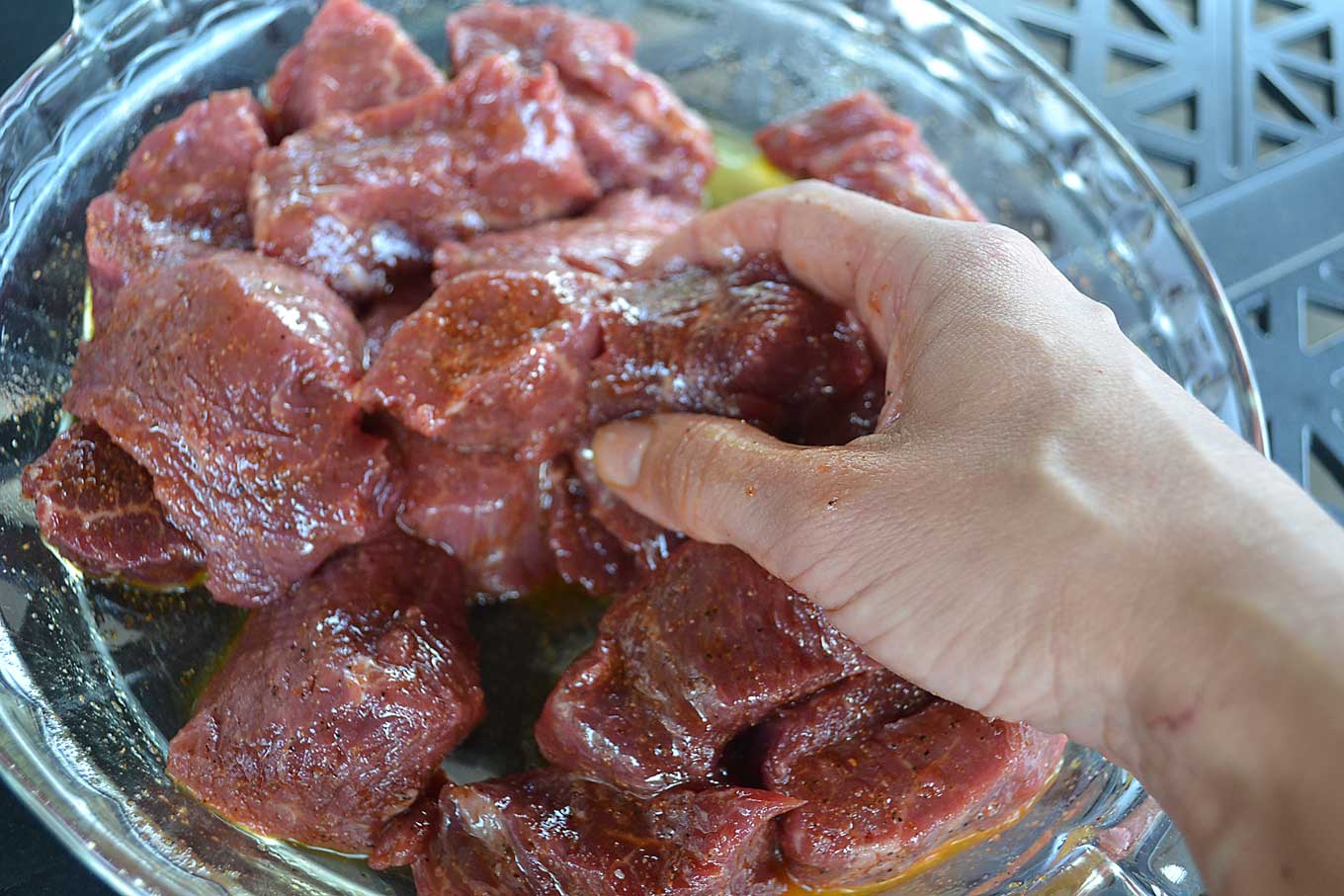
When finished skewering all the ingredients, pour the remaining marinade on the kebabs. Add a generous drizzle of Worcestershire sauce to each kebab as well.
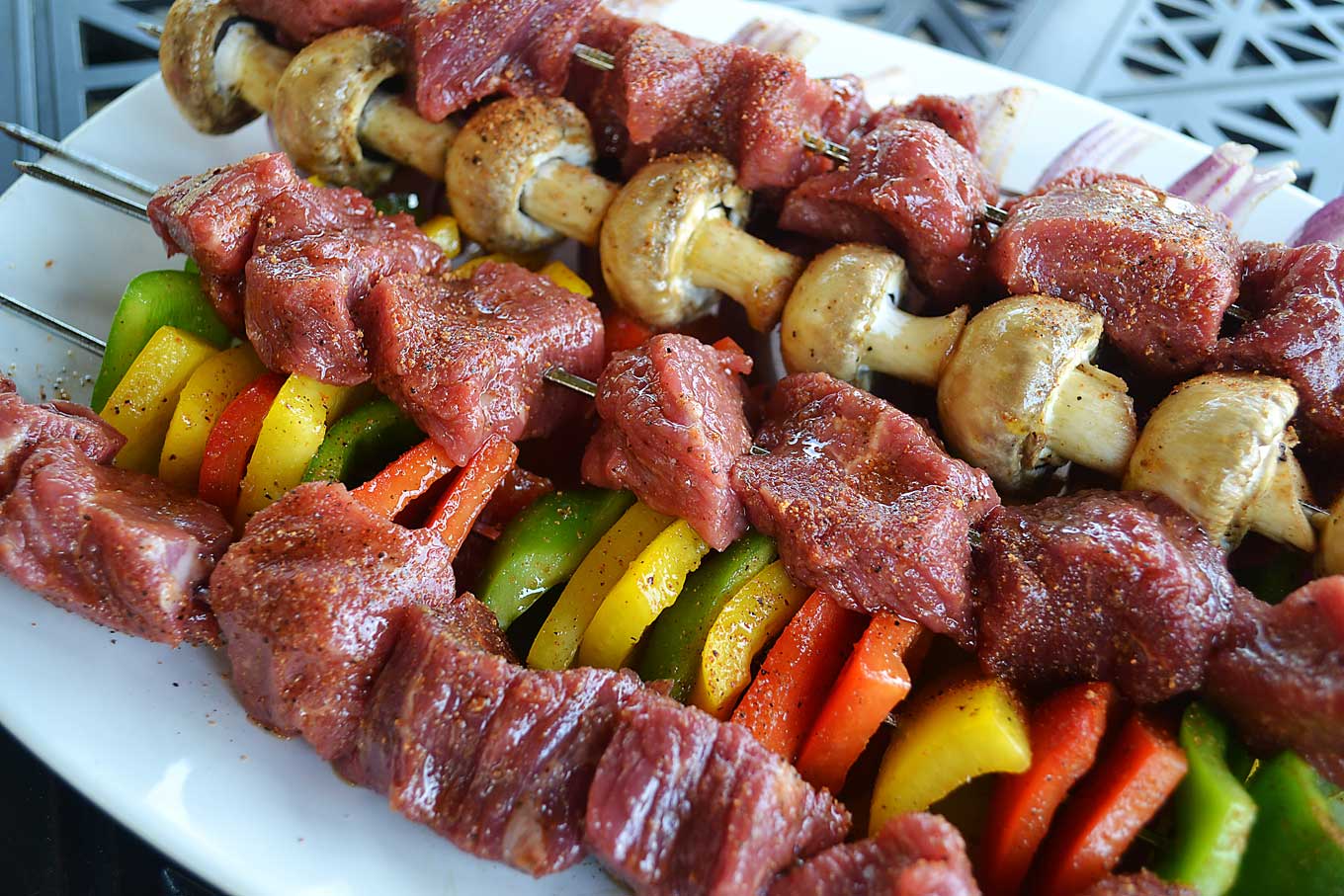
Add the kebabs to the grill and turn them or move them to cooler/hotter parts of the grill as needed until each item reaches desired doneness.
Usually it takes mushrooms and onions longer to cook, so I put them on the periphery of the fire first, which allows them to soften and caramelize without burning.
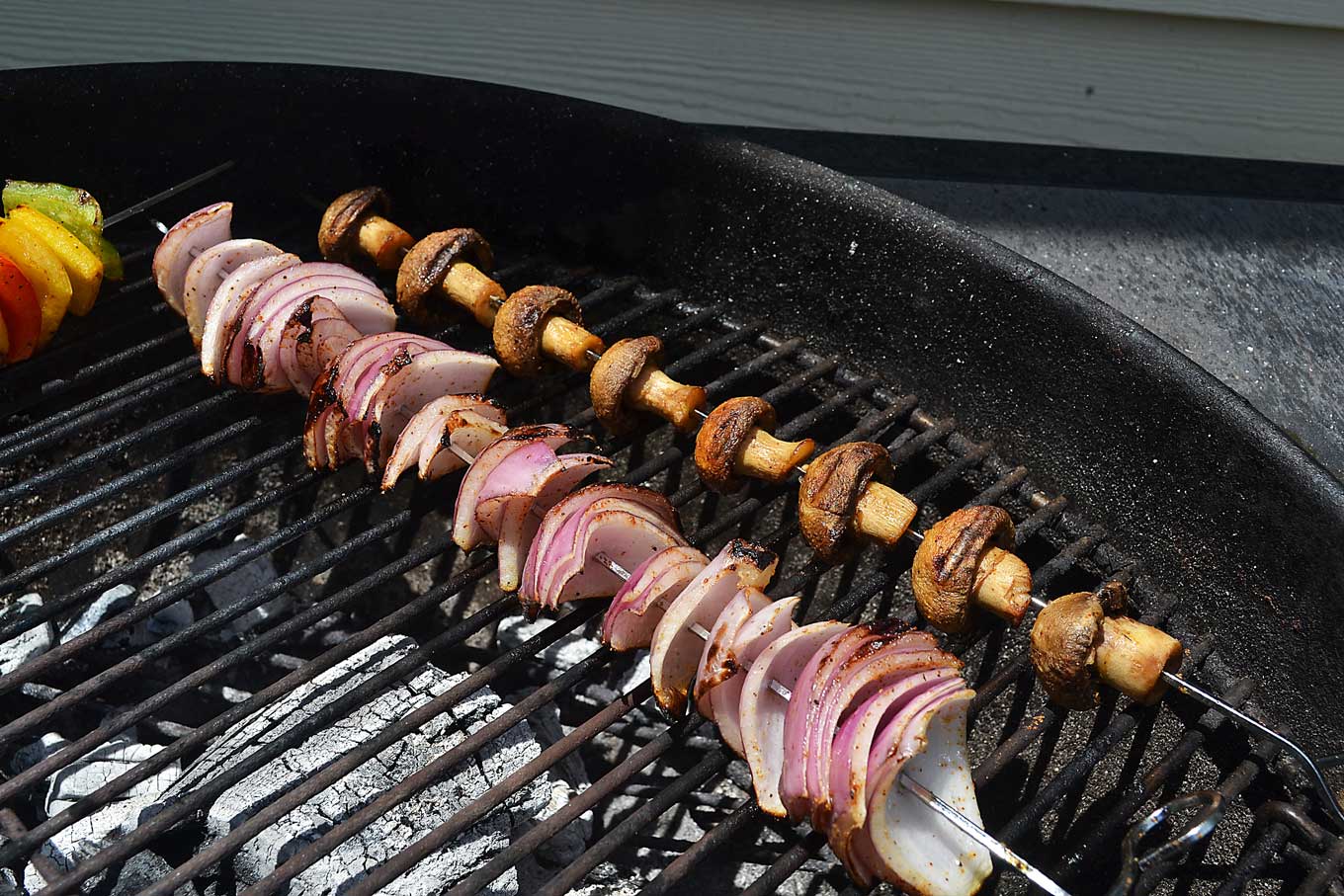
I then add the peppers, placing them a little closer to the fire.
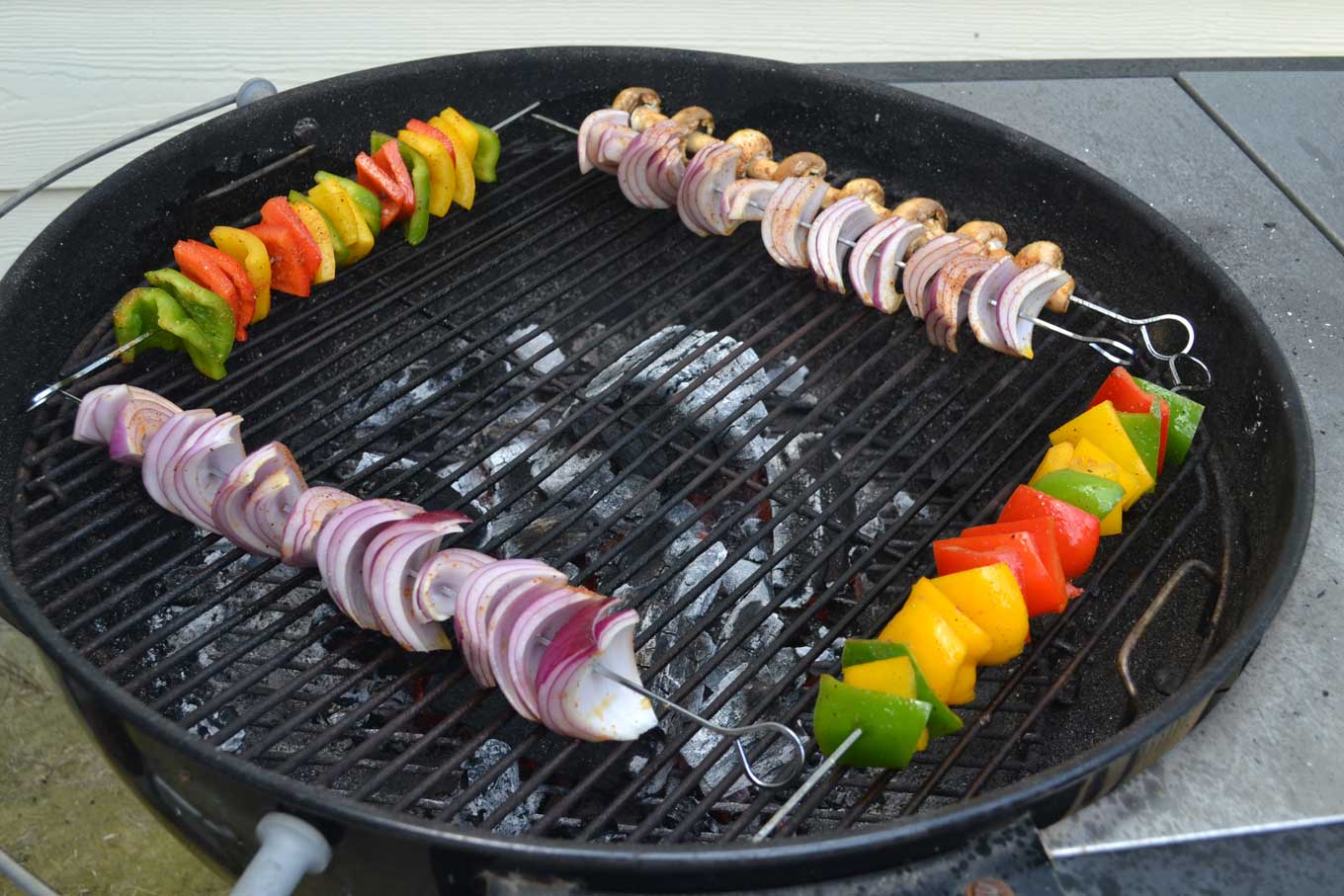
Be sure to turn the vegetables over every 3 minutes or so to prevent them from burning. See the glorious caramelized color? And wait until you smell them cooking…you’ll need to control yourself!
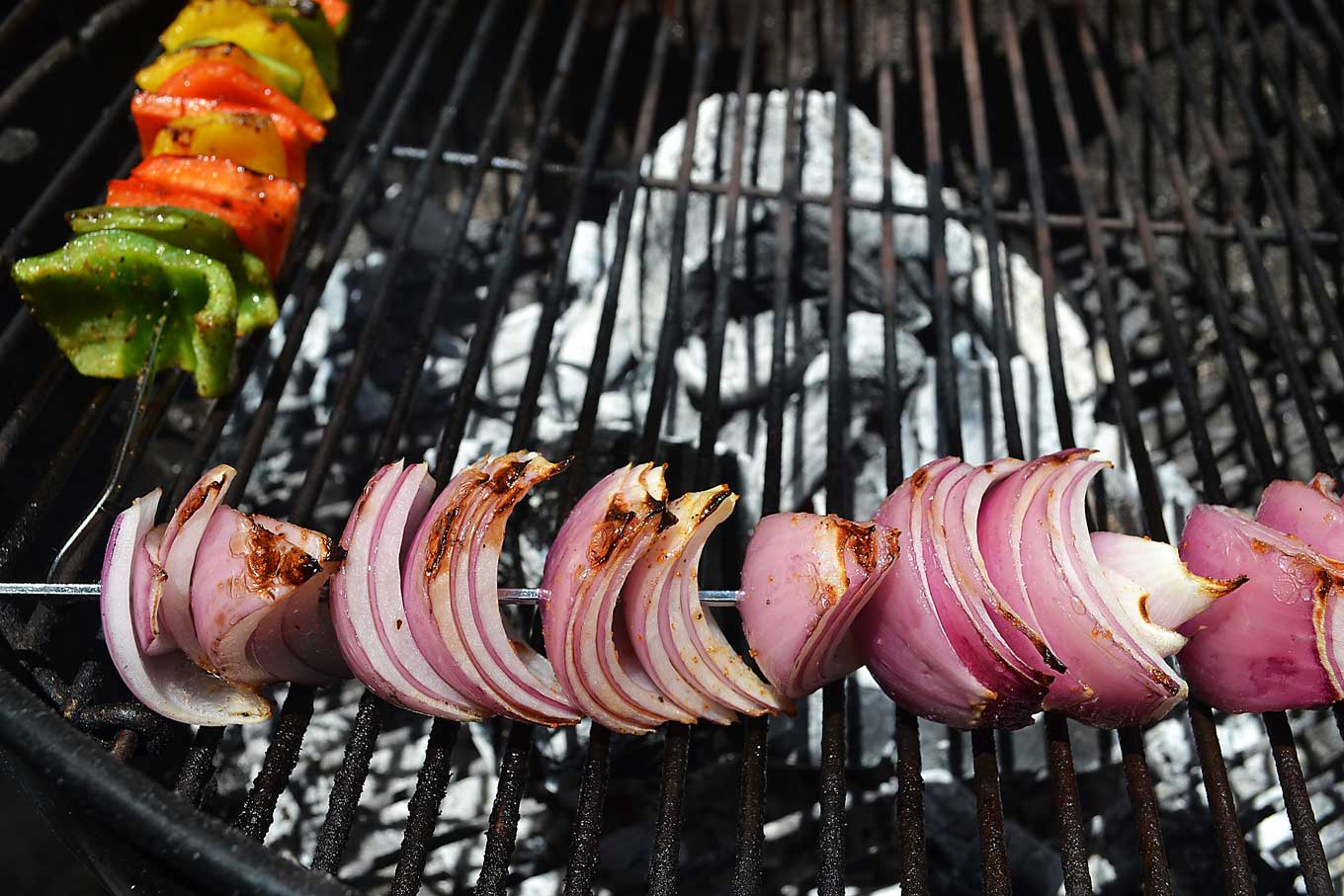
Before you know it, as they continue to cook, they will begin to soften and to turn delish.
Finally, I add the meat directly on the hottest part of the fire.
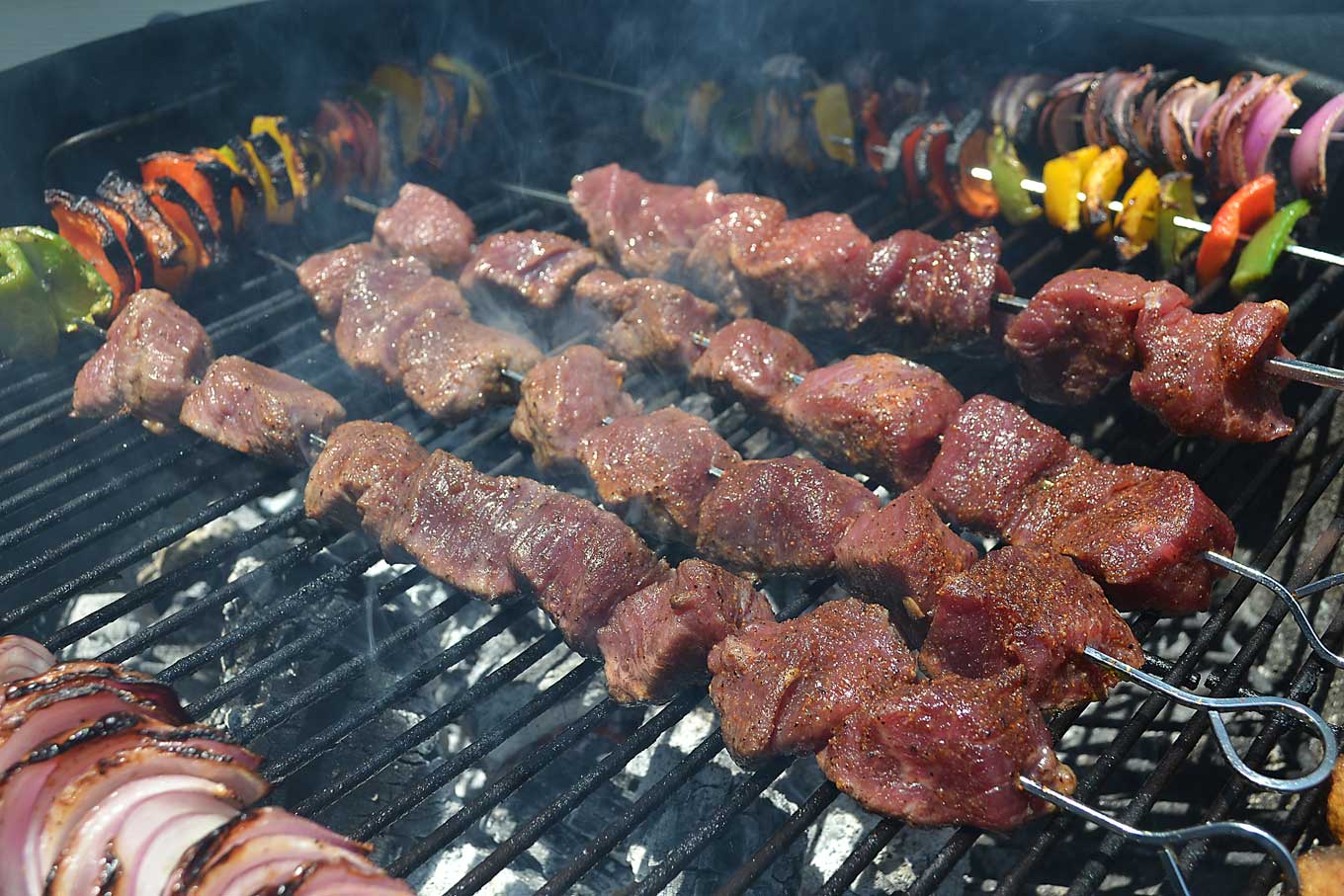
Make sure to turn over every individual kebab every 3 minutes or so. Typically, depending on its size and shape, meat kebabs need to be grilled 9 -10 minutes for medium, 6-7 minutes for rare, and 12 minutes for well-done. Remove from the grill and sprinkle immediately with a little salt and fresh-cracked pepper.
Let the shish kebabs rest for 5 minutes, and then serve immediately. Makes 4 servings.
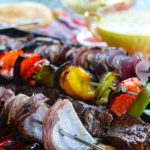


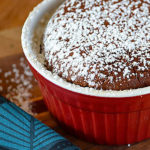

Leave a Reply